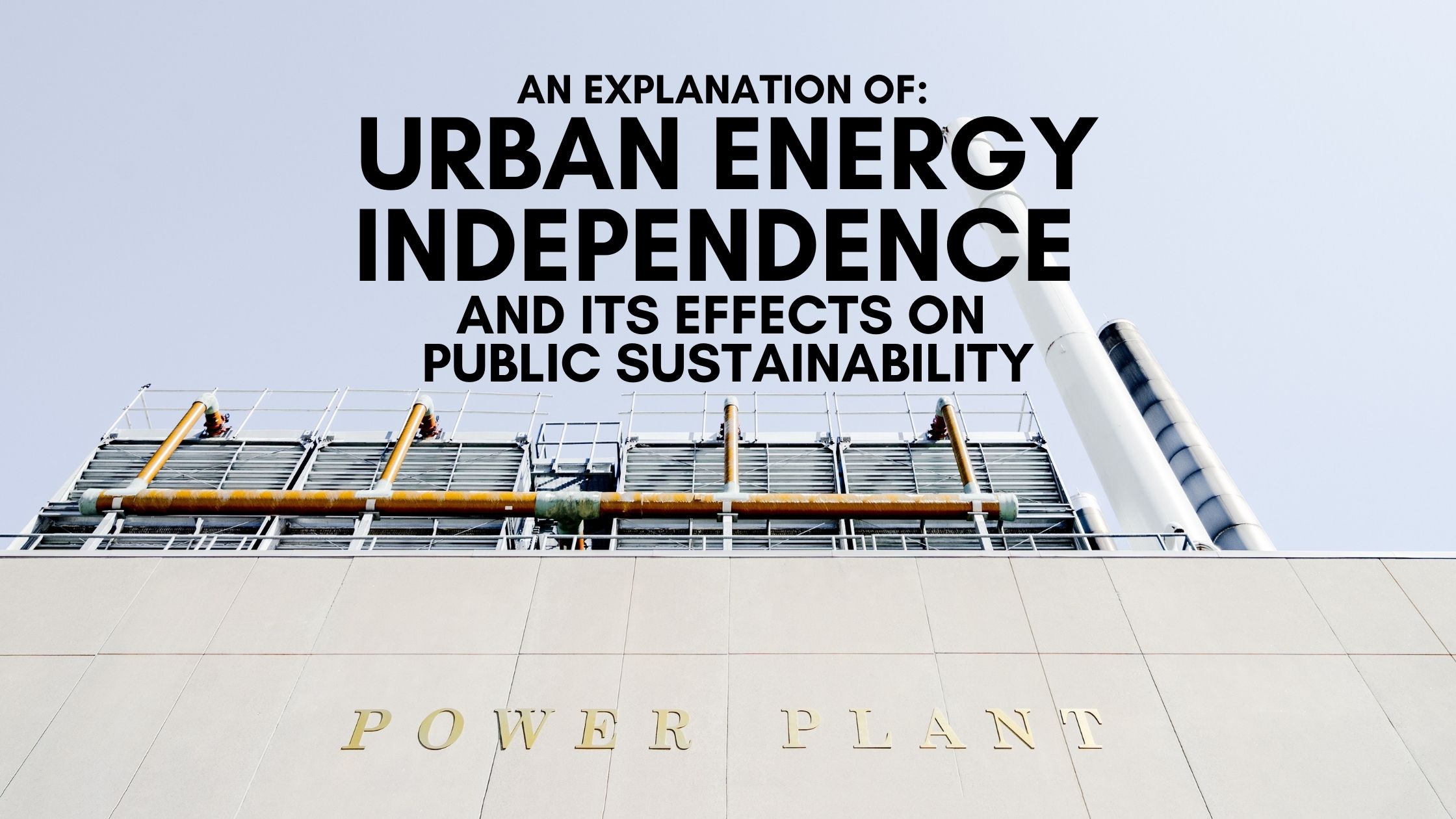


As climate crises like the Texas winter freeze or the blistering heatwave that hit the Pacific Northwest become more common, individuals and municipalities alike are recognizing the importance of energy independence and public sustainability.
But urban energy independence is a hard thing to get right. As we saw from Texas’s troubles with its independent energy grid, balancing sustainability requires innovative technologies and planning for the worst. From installing energy-efficient lighting to creating reliable renewables, challenges abound across urban sustainability planning.
However, urban sustainability and energy independence are vital for the future. Thus we must all understand why and how this independence can create a more sustainable world for all living beings.
A continuous supply of power in the world’s most populated regions is necessary to ensure that people have what they need to live and stay safe in day-to-day life and especially when climate disasters strike. As populations grow, urbanization expands, and energy demands surge, we face an ongoing mismatch of resources and needs that put many at risk.
Urban areas consume as much as 75% of global primary energy, and yet most of them are not built to utilize renewables and coordinate natural resources effectively. We are still highly reliant on fossil fuels to generate the power needed by much of the world. Around 60% of the electricity produced in the U.S. came from fossil fuels.
Meanwhile, our municipal infrastructures often fail to support the innovations needed for true sustainability. This includes a lack of charging stations for electric vehicles (EVs), limited public transportation options, energy grids that aren’t built with renewables in mind, and a host of other problems.
But changing all this is becoming increasingly necessary, both for the welfare of those in congested urban areas and to comply with federal regulations. For example, the Energy Independence and Security Act of 2007 set a mandatory renewable fuel standard of 36 billion gallons of renewable fuels by 2022. To achieve reduced carbon emissions, cities have to support EVs and renewable integration.
This requires planning and a commitment to energy independence from both fossil fuels and power grids that cannot reliably sustain the needs of the public.
Energy Independence is one of the most important components of any sustainability approach. For municipalities, the ability to offer independence on both a public and individual level makes all kinds of positives possible. For example, individuals who embrace energy independence experience the following benefits:
On a larger scale, urban areas can combine renewable energy sources to effectively create microgrids that support a sustainable public. While many express concerns that renewable energy sources don't offer reliability, proper urban planning can ensure a continuous flow of energy no matter the weather. Solar power alone can scale these microgrids to meet the needs of urban areas, through effective storage of energy and a pooling of resources.
In the meantime, communities can apply renewable energy to all kinds of efforts. From a public transit system that taps into microgrids as it passes through to lighting systems that illuminate common areas all with renewable solar power, cities can pull from natural sources to cheaply provide their residents’ needs.
The potential of sustainable planning goes beyond even the demands of urban humans. For example, the city of Bradenton Beach made use of solar LED lights that provided amber light that wouldn’t disrupt the navigation of local sea turtles. The result was a sustainable and cost-effective ecosystem for the entire public — turtles included.
Independent energy systems are more publicly sustainable because they can maintain the needs of a populace with direct accommodation of local conditions. In Bradenton Beach, that meant helping the turtles. In other locales, microgrids can address all energy needs without having to be tied into the troubles of other power supplies. Smart grids can even help to communicate energy needs effortlessly across communities.
And the best part of developing sustainable urban energy is that you can play a role.
When it comes to developing a sustainable urban environment, a host of resources are on your side. From activism in your local government, to stepping onto the path of an urban developer yourself, here are the ways you can make urban energy independence more possible in your community:
While not all these suggestions are for everyone, each option allows you to make a difference in your community. For example, obtaining an education in sustainable urban planning and development can allow you to actively improve the community you love while making a real impact on your urban environment. Plenty of jobs make up this growing field.
But no matter how you strive for energy independence and public sustainability, understanding the importance of these issues and the ways they impact communities is vital. After all, we’ll need independent and sustainable grids that run off renewable energy sources at some point. Why not start now?
About the Author: Amanda Winstead is a writer focusing on many topics including technology and sustainability. Along with writing she enjoys traveling, reading, working out, and going to concerts. If you want to follow her writing journey, or even just say hi you can find her on Twitter.
